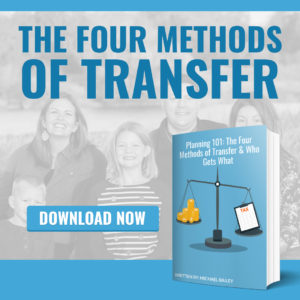 I got a phone call from someone the other day asking about a disability trust. The woman told me a long story about how her son was on the autism spectrum and was unable to handle school, life, or his own finances. She took care of him and would always take care of him as long as she was alive, but she was also very concerned about who would care for him after she died. Her son was receiving Medicaid assistance and she was very concerned that she needed to set up a disability trust for her son.
I got a phone call from someone the other day asking about a disability trust. The woman told me a long story about how her son was on the autism spectrum and was unable to handle school, life, or his own finances. She took care of him and would always take care of him as long as she was alive, but she was also very concerned about who would care for him after she died. Her son was receiving Medicaid assistance and she was very concerned that she needed to set up a disability trust for her son.
As we discussed how we might set up a trust to protect assets for her son, I mentioned that we could keep the assets inside of a special needs trust, and she interrupted me to say, “ I don’t need a special needs trust, I need a disability trust!” We talked about how those two terms really do have the same legal effect – even when you Google “Disability Trust” most of the results point back to a special needs trust. While a disability trust can have a specific meaning for Medicaid income restrictions in Colorado and income protection under Colorado law, most people are not looking for a Medicaid income protection trust when talking about preserving assets. Whether a trust is a “disability trust” or assets are held in a “special needs trust,” the outcome is still the same…the trust is designed to hold onto assets and use those assets for the disabled person, or the person with special needs.
Whatever the trust is called, the idea is that assets can be held in the trust and used to care for the disabled person, while preserving their ability to receive government benefits. I have previously written about special needs trusts, so a further discussion on this point can be found here.
Since disability trusts work mostly the same way as special needs trusts, both have similar implications for what needs to be done. When setting up a disability trust, special care and attention needs to be taken to look at the available asset limits for the specific program helping out a disabled person. There are also different types of trusts that can be established by the disabled person themselves, or by others for the benefit of the disabled person. Knowing what type of trust needs to be set up and how to structure the disability trust to properly benefit the disabled person are absolutely necessary to successfully establish and navigate the world of disability trusts and disability benefits.
Disability Trusts Are to Protect Assets
One of the most common, and most important, reasons people establish disability trusts are to preserve assets for the use of the disabled person. Having a disability can be an expensive thing – the cost of medical care is higher than a fully healthy person, a disabled person may need extra services to assist with life activities, and a disabled person may have a diminished earning capacity in the face of higher expenses. As such, there are many government programs to assist disabled people in navigating and paying for life. A lot of these programs are needs based, and they are designed to help those with less wealth, so they have asset limits.
Medicaid is one of the bigger programs that assists disabled people. Medicaid has a $2,000 asset limit, which means that in most cases, a person needs to have $2,000, or less, of countable assets to qualify for Medicaid. There are certain exempt assets that do not count against a person for Medicaid, like a primary residence up to a certain amount of equity, and a car, but any other cash / investment assets usually need to be spent down to $2,000 or less before Medicaid will start helping.
As you probably know, $2,000 is not a lot of money! If someone who currently received Medicaid because the person is disabled receives an inheritance, or otherwise comes into a large sum of money, then Medicaid will likely kick the person off of Medicaid assistance. The person would then need to spend the money received, and re-apply for Medicaid when the inherited money is gone. By setting up a disability trust correctly, the money can be preserved, and the disabled person can continue to receive Medicaid assistance, while still benefiting from the inherited money. This is not only true of Medicaid, but also other government assistance programs.
Disability Trusts Need to be Structured Properly to Protect Assets
 Setting up a disability trust to protect assets takes careful planning. A disabled person can be a beneficiary of a disability trust, but cannot be the trustee of the trust (the person in charge of the trust administration and distribution) and the beneficiary of the trust, otherwise the assets could be considered fully available to the disabled person. In this case, the assets would not be protected. Instead, the assets should be kept inside of a trust where someone else is the trustee of the trust and distributions to the disabled beneficiary are restricted. The restrictions need to be set up according to the rules and regulations of the government program assisting the disabled person. Those types of restrictions are often the same as the special needs trust provisions, which protect assets from being counted as available assets to the disabled person. By having a third party trustee, and a disabled beneficiary, assets can be protected while the disabled person still qualifies for the government program.
Setting up a disability trust to protect assets takes careful planning. A disabled person can be a beneficiary of a disability trust, but cannot be the trustee of the trust (the person in charge of the trust administration and distribution) and the beneficiary of the trust, otherwise the assets could be considered fully available to the disabled person. In this case, the assets would not be protected. Instead, the assets should be kept inside of a trust where someone else is the trustee of the trust and distributions to the disabled beneficiary are restricted. The restrictions need to be set up according to the rules and regulations of the government program assisting the disabled person. Those types of restrictions are often the same as the special needs trust provisions, which protect assets from being counted as available assets to the disabled person. By having a third party trustee, and a disabled beneficiary, assets can be protected while the disabled person still qualifies for the government program.
When a parent sets up a disability trust for a child, the parent can establish a separate trustee from the disabled person, and the assets can be protected from the government taking the assets. This type of arrangement is called a third party trust, or a third party disability trust, or a third party special needs trust because the trust is established by someone other than the disabled person themselves. Third party trusts are the most common type of disability trust set up to preserve assets and care for a disabled person.
There is a first party disability trust, which can be established by the disabled person themselves, but such trusts are much less common and much more involved to establish. The disabled person is transferring assets away from themselves, into a protective trust, and so any restrictions on asset transfers by the government program need to be considered and accounted for in establishing such a trust. There are many more steps involved in preserving assets that need to be transferred away from a disabled person, then preserving assets that are to be transferred to a disabled person by a third party. A first party disability trust needs to meet the specific requirements of Colorado law, likely including naming the state program as a final beneficiary..
Disability Trusts Can Help You Plan for Your Disabled Relatives
Many parents want to establish third party disability trusts for their disabled children, and I help them accomplish that goal. I really enjoy helping parents plan for their own disabled children’s needs. Like the lady who called me the other day, I can help set up a third party disability trust to preserve your assets for your disabled child and ensure they are cared for after you are gone.

 720-730-7274
720-730-7274









